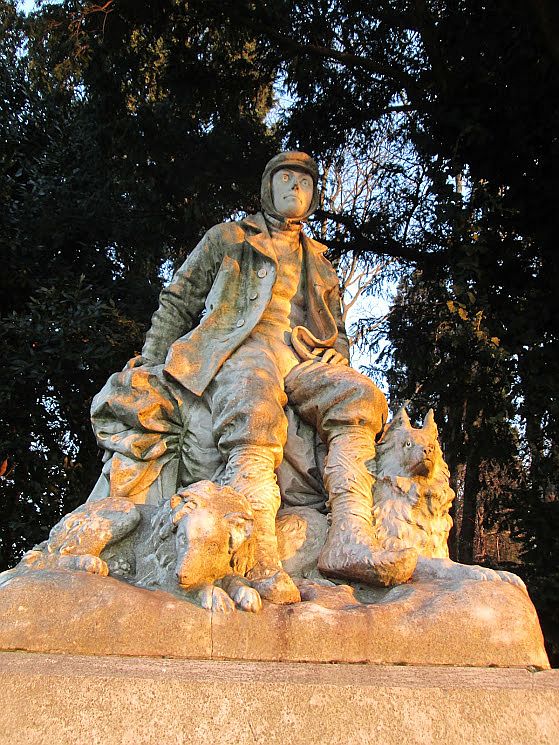
Francesco Querini isn’t exactly forgotten, even if the inscription on his monument has become totally illegible, but the casual passerby has no way of identifying him. He’s hard to miss, though, considering that his statue has a front-row seat in the Gardens, and he makes quite an impression — in Venice one certainly doesn’t expect to see a man in Arctic gear with his huskies, staring at the horizon.
No, he did not bring the serum to Nome. I suppose he could have, but he had been dead for 24 years by then. Oh wait — we don’t actually know when he died. We only know when he was last seen: March 23, 1900. So basically he’s famous not for what he did, but for what he didn’t do: Make it home safe from the North Pole.
Querini was born on December 16, 1867, a member of the San Silvestro branch of one of Venice’s most illustrious and ancient families; he was also a decorated naval officer, and a scientist. He spoke English, French and German perfectly, and he was up to speed in Latin, though it probably wasn’t something he often needed in conversation. He was prepared for many things in life, but he wanted more than what even the most eventful naval career could offer.
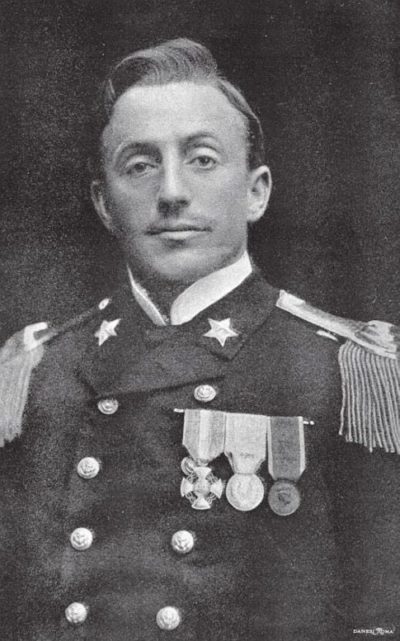
In 1899 Prince Luigi Amedeo of Savoia-Aosta, duke of the Abruzzi, organized an expedition to the North Pole, and asked Querini to join; his responsibilities were to be the collection of minerals and acting as the right-hand man of Captain Umberto Cagni (KAN-yee) for the scientific observations.
This may not sound like anything impressive today, but theirs was the latest in an already long series of efforts to certifiably reach the North Pole. It had become something of an international competition.
The immediately preceding attempt had been Nansen and Johansen in April 1895, who reached latitude 86°14′ North on skis before they turned back. Each expedition was getting closer to the goal, and the duke, already famous for his extreme adventures, was determined to be the one to get there.
The group of 21 members departed from Archangel on July 12, 1899 aboard the revised whaling ship “Stella Polare,” and in the course of the expedition various members suffered the usual Arctic horrors, from frostbite to amputations to their eyes freezing shut. On March 11, 1900, after the long winter in the ship preparing for the assault, and a failed first start, it was off for the Pole.
Ten men were divided into three sections. The duke had to stay in camp due to slow recovery from the aforementioned amputation (of two frozen fingers). Cagni had three men, Cavalli Molinelli had two men, and Querini had two men. I don’t know how the 104 sled dogs and ten sleds were apportioned.
The temperature dropped to -53 degrees C (-63 F) but worse than the cold were the ridges. Colliding ice floes often create ridges, and progress was much slower than the men had anticipated (four kilometers in 12 hours, or 33 meters/100 feet per hour, or a little more than one foot per minute). Supplies began to dwindle, and after 12 days of struggle forward it was clear that there wouldn’t be enough food for everybody to reach the Pole and return.
On March 23, 1900 Cagni ordered Querini and his men to turn back toward base, and shortly thereafter Cavalli also headed back. Cavalli made it, after 24 days of trekking, and Cagni also made it after a harrowing two solid months (subtracting dogs and abandoning equipment along the way). But Querini and his two intrepid companions, Felice Ollier (a mountain guide from the Val d’Aosta, 30 years old) and first macchinista* Enrico Alfredo Stokken (Norwegian, 24 years old, who had asked to be taken along), were never seen again.
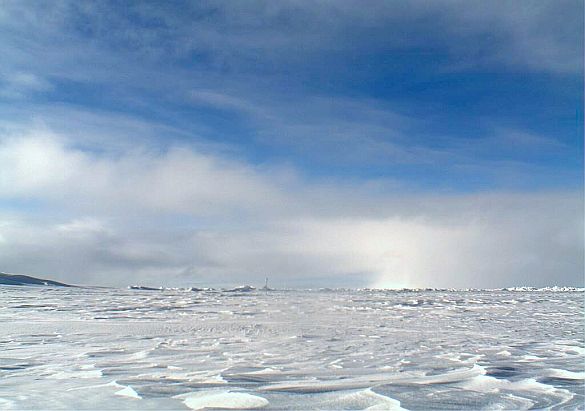
Cagni’s four-man squad had reached latitude 86°34′ on 25 April — Saint Mark’s day! — setting a new record by beating Nansen’s result by 35 to 40 km (22 to 25 miles), stopping at about 382 km/237 miles short of the Pole. I’d like the fact to sink in that an Italian team established a polar record that stood until May 12, 1926, when Amundsen and another Italian, Umberto Nobile, verifiably attained the Pole. More about them in the next installment.
Naturally the whole expedition was aghast at Querini’s disappearance. The duke organized a search party that went east for 12 days. But by August 16 the group decided they finally had to depart, and the “Stella Polare” weighed anchor from its harbor on Prince Rudolf Island. They left abundant provisions of every kind, as well as eight dogs (and food for same), plus a small boat, and shaped their course for Norway.
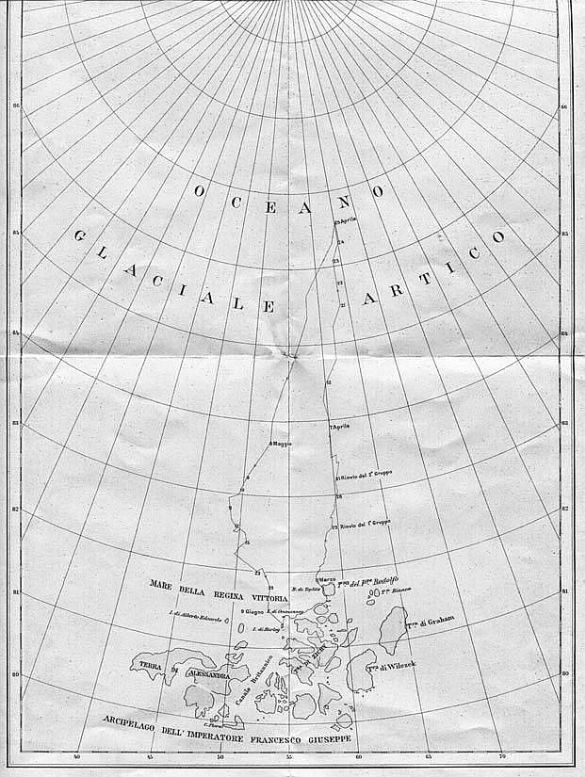
Does it seem strange that somebody could just disappear? It’s strange that it didn’t happen more often, up there surrounded by several million square kilometers of empty white.
They were walking on ice, which tends to form in ridges, “small ‘mountain ranges’ that form on top of the ice…that can easily be two meters/six feet or higher,” states the National Snow and Ice Data Center. “Ridges create significant obstacles to anyone trying to traverse the ice. One usually encounters 4 or 5 pressure ridges per kilometer, but the number may rise to 30 per kilometer in places.”

Furthermore, the ice is floating. Setting aside the dread danger of “leads,” or water breaking open between the stretches of ice, the men were trudging across floes that were subject to four forces: “Wind drag, water drag (current), Coriolis force (a force resulting from the earth’s rotation, which acts at right angles to the velocity vector of the ice …), and lateral forces resulting from the pressure of the surrounding ice floes,” as explained in “The Physics of Ice.” ” The earth is rotating from west to east. If the forces of wind and current move the floe to the south… the floe tends to lag, and acts as if a force were pushing it westward.” The motion of the ice was one reason Cagni’s team took two months to make it back, as whole days were lost as the men walked forward on ice which was moving backward.
As Querini’s fate was reluctantly accepted, the memorials began to appear.
In November of 1900, the Italian Geographic Society awarded its silver medal to “the Hero fallen in one of the most arduous battles of science.” Dramatic as their race to the Pole was, the men were also pursuing important research, among which were the exact determination of the oceanic circulation, the location of the magnetic pole and its influence, light phenomena in the polar night, the thermal economy of the atmosphere and the Arctic seas, the formation and drift of the ice, the force of gravity, and measuring the depression of the planet toward the North Pole.
Early in 1901, the city of Venice advertised a large reward to anyone able to give news of the men. On May 22, 1901, Count Filippo Grimani, mayor of Venice, bestowed on Querini’s father, Nunzio, a gold medal as a token of “the city’s sentiment toward the memory of his son.”
On May 16, 1901, Count Piero Foscari met with 20 dissatisfied members of the Royal Rowing Society Bucintoro and founded a new rowing club named in honor of his lost friend: the Royal Rowing Society Francesco Querini.
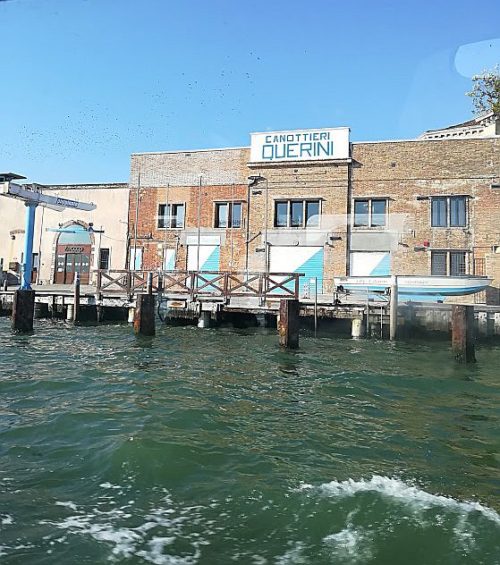
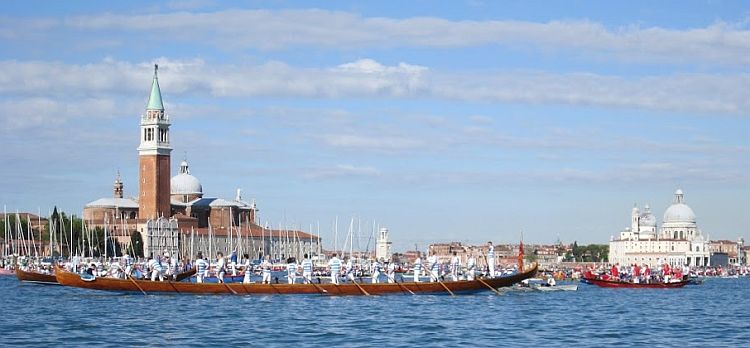
Refusing to abandon all hope, even after frequent questioning of whaling crews brought no information, the duke sent a ship to Franz Josef Land in the summer of 1901, commanded by the father of machinist Stokken. They too returned with no news whatever.
In May of 1903, the Italian Navy sent the family a medal honoring all the members of the expedition.
On October 12, 1903, the city council of Venice unanimously approved the commissioning of a monument to Querini (the famous statue), to which the duke of the Abruzzi contributed 10,000 lire (this was only slightly more than the annual salary of an upper-echelon civil servant). It also voted to establish a scholarship in Querini’s honor for the sons of Venetian seamen or military officers applying to the Naval Academy at Livorno.
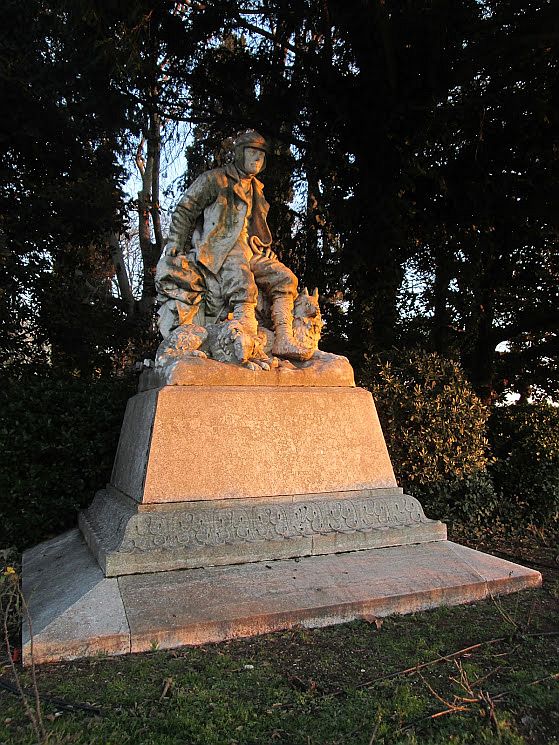
It is reported that a further phrase was incised — if it was on the pedestal, it also has disappeared — to honor Querini’s comrades. It said “A PERENNE MEMORIA / SI SCRIVONO QUI I NOMI / DEGLI ALTRI DUE COMPAGNI PERITI NELLA SPEDIZIONE / ENRICO ALFREDO STOKKEN 1 MACCHINISTA / FELICE OLLIER GUIDA.” “In perpetual memory / are written here the names / of the other two companions who perished in the expedition / Enrico Alfredo Stokken first macchinista / Felice Ollier guide.”
For the record, there is a monument to Felice Ollier in Courmayeur in the Val d’Aosta, also offered by the duke. I have yet to locate any mention of a memorial to Enrico Alfredo Stokken.
One doesn’t want to imagine Querini’s last days, or at what point he and his companions realized it was over, or when it actually was over for the last of them. Did they starve? Freeze? Drown? Were they killed by polar bears? It seems as if they simply evaporated, and I, for one, profoundly wish that could have been true.

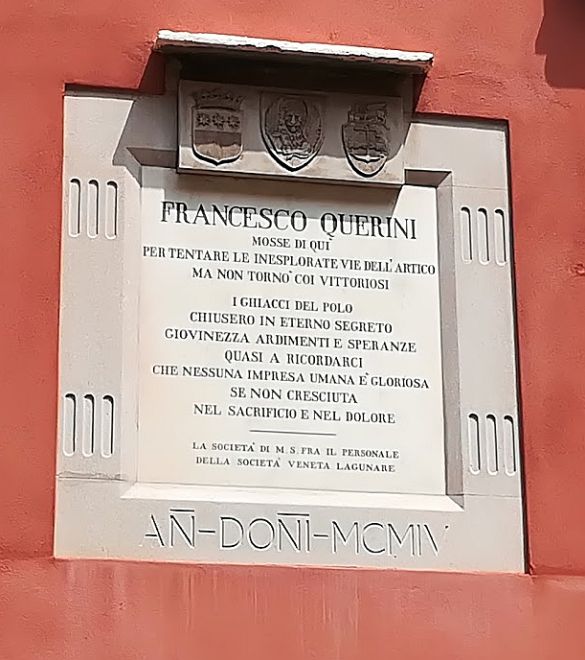
- On a steamship, the macchinista was responsible for operating the machinery in the engine room in response to the captain’s orders from the bridge. Before automated controls, when the man at the wheel would call an order (“full steam ahead,” for example), the macchinista did whatever was necessary to whatever machines were required for the maneuver.

2 Comments
Thank you for this series! My husband and I visited Venice for the second time last Christmas and we remember these statues – and this one in particular – very well. We wondered who this man with his faithful dogs could have been. I discovered your blog on the recommendation of a friend in NY who I believe you know, Barbara B. and have been enjoying it ever since.
I’m sure everybody who sees the statue wonders about him. I’ve done my little part in disseminating information, but maybe someday a modest little sign will be put up.